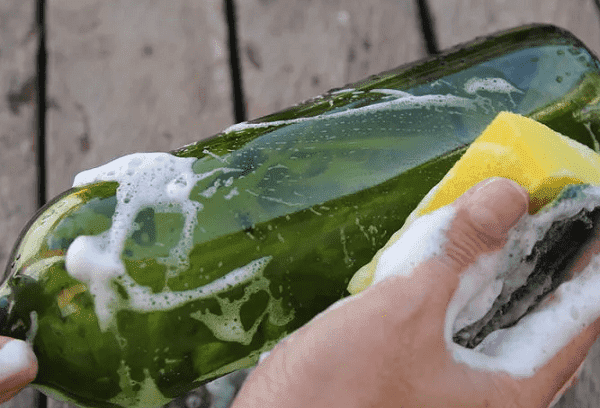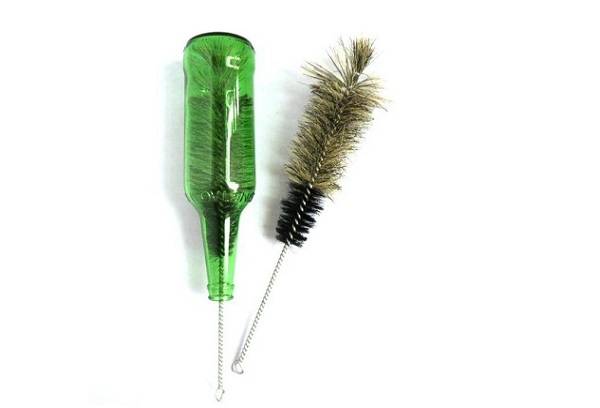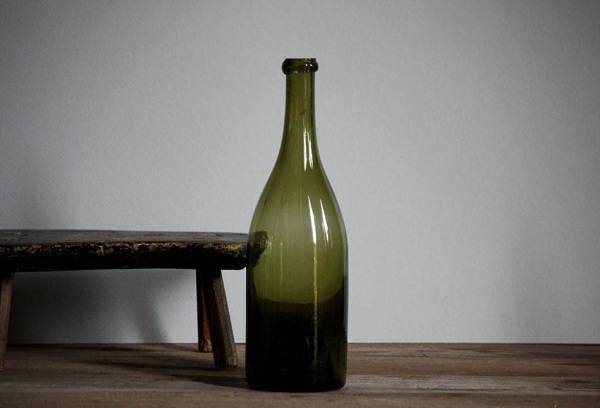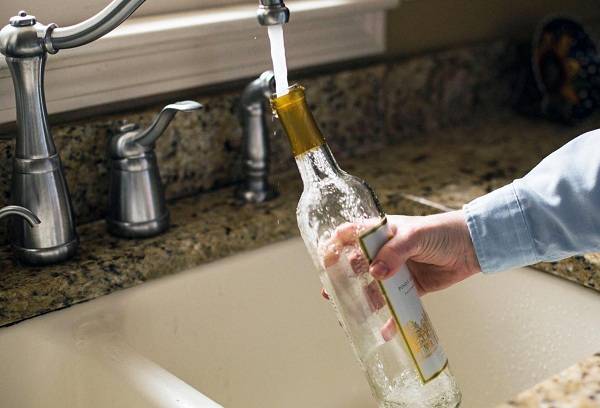How and with what to wash a wine bottle with a narrow neck
Lovers of homemade wine and other homemade drinks often use 20-liter glass containers to produce their masterpieces. Taking into account the peculiarities of the composition of such products and the specific design, many winemakers are faced with the question of how to wash a bottle of wine with a narrow neck in order to subsequently use it for the same purpose.
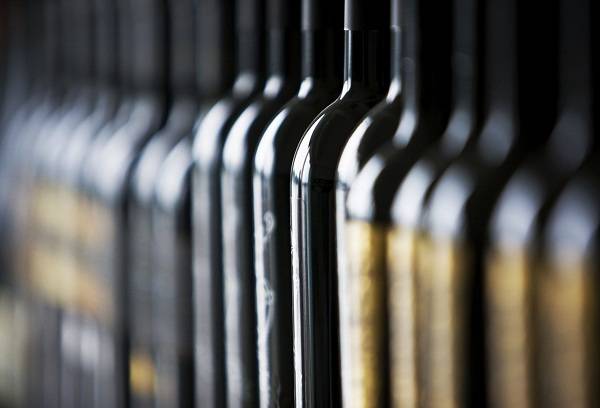
Many impact options have been developed, but, regardless of the approach, you always need to remember one important rule - the sooner you start processing the container, the less hassle it will take to achieve the desired result. If a dirty bottle is left for several months, it will be very difficult to wash it of sediment and unpleasant odor.
Important points of the process
Cleaning a wine container will go faster and won’t cause much trouble if you adhere to the following rules:
- Initially, the product must be soaked in warm water. If there is such an opportunity, then it is better not to just fill the bottle, but to place it in warm water, then the sediment will fall off faster.
- After each cleaning option (if it does not give an ideal result), the item should be dried before repeating the approach or trying something new. Alternating chemical exposure with the use of clean water and dry air will destroy even the most stubborn sediment.
- When trying to remove plaque from inside the bottle, one must not neglect the law of universal gravitation.If you turn the bottle over so that the problem area is on top, it will gradually crumble under its own weight. However, given the size of the item, this is not so easy to do.
Tip: Glass is not plastic, it practically does not retain aromas. Often the cause of an unpleasant odor that seems to be coming from the container is an old or damaged lid. You shouldn’t try to wash or disinfect it, it’s better to just replace it.
- Even though the glass used in wine bottles is very thick, it is not that difficult to break. When cleaning, do not use coarse sand, pebbles, or small stones. They really effectively break up dense sediment, but can leave scratches on the inner surface of the product, which in the future will lead to a decrease in the strength of the material.
If the bottle has not been cleaned for so long that its internal surfaces are covered with mold, then cleaning products alone will not be enough. You will have to use disinfectants or professional sterilization methods.
Simple but effective methods
In cases where the contamination is very fresh or is not excessively dense, you can try cleaning a container with a narrow neck using one of the following methods:
- Ershik. It is clear that this can only be a special device with a very long handle and fluffy dense pile. It passes through the neck of the product without any problems and allows you to wipe off even the most stubborn stains.
- Jet pressure. If you have a watering hose at your disposal, then by adjusting the intensity of the water supply you can again thoroughly clean the insides of the bottle.
- Detergents. Fresh stains can be easily washed off with the most common dishwashing detergents. The main thing is not just to pour the product into the container, but also to shake it thoroughly so that the effect affects all dirty areas.
- Soda. Simply pouring baking soda into a bottle of water will have virtually no effect. The composition will slightly soften the sediment, but will not get rid of it completely. This approach must be combined with mechanical action, for example, working with a brush or sponge on a holder.
- Vinegar. This product will not only dissolve sediment, plaque or scale, making it easier to remove, but will also disinfect the container. True, you need to resort to this approach only if time is not pressing and the product can be aired in the fresh air for a long time after cleaning, otherwise traces of a pungent odor will remain for some time.
- Fine sand. First, pour in fine sand, calcined on a baking sheet, then pour in water. If you vigorously shake the container, it will clean itself perfectly. The main thing is to make sure after this that all the sand has been washed away.
Some owners try to clean the bottle with buckwheat, but in practice this method is not as good as it seems. The food component softens under the influence of moisture, causing its particles to peel off and stick to the glass. They can be almost invisible until they begin to rot and spoil the taste and aroma of the drink stored in the container.
Unusual approaches and their features
In addition to the listed approaches, there are a couple more methods that can remove dirt even from a container that has stood uncleaned for several months.
- Newspapers. Finely tear the newspaper paper and push it through the neck of the bottle. It needs to be filled about a quarter full.Then pour three liters of clean water into the container and wait for the paper to swell. Then we begin to make intense shaking movements in all directions to clean all areas of the glass.
- Textile. A similar method, but first we fill the bottle with clean water diluted with a liter of river or swamp liquid. We leave the container for several days until it “blooms”. Then we insert unnecessary thin fabric through the hole. When it gets wet, we begin to drain the liquid, while straightening the material (with some kind of stick) so that it sticks to the walls of the container. After this, slowly pull the cut, wiping the inside of the bottle. We rinse the container several times.
Before using a clean bottle, it is recommended to dry and seal it. After 3-5 days (if possible, it is better to wait a couple of weeks), open the container and check whether there is an unpleasant odor coming from it, or whether traces of dirt have appeared on the walls on the inside. If anything raises suspicions, we repeat the cleaning from the very beginning, after which we carry out a check again.
